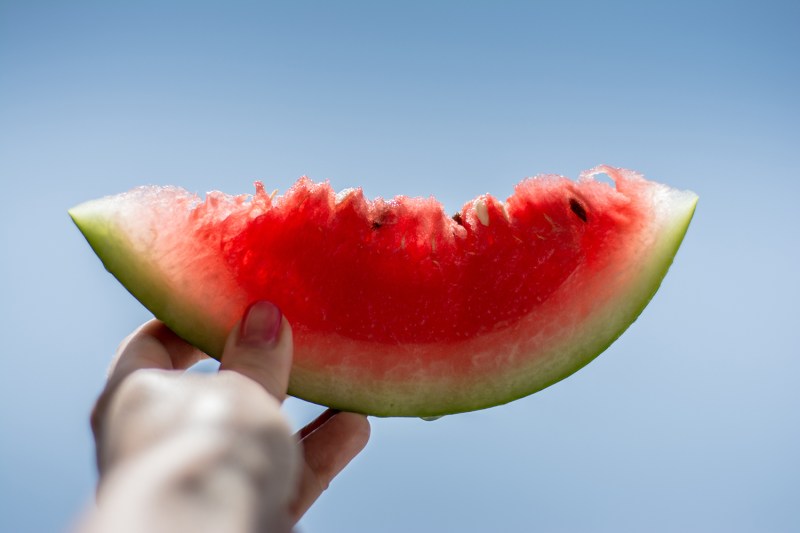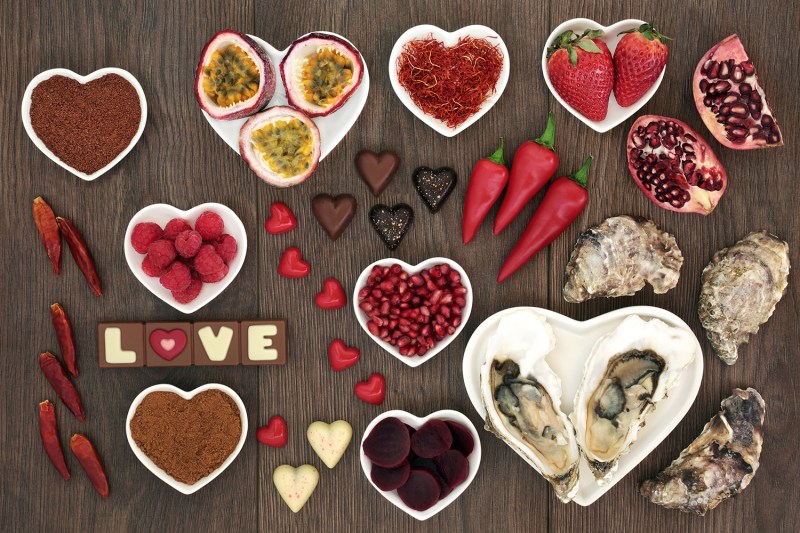
The well-known Italian talk of the town (and lover to many) Giacomo Casanova reportedly ate oysters every day to boost his sexual stamina. Before he became famous for the things he did in his lifetime, people in Arab countries were already consuming the gut juice from sperm whales to increase their libido. With Valentine’s Day coming up, you might be thinking similarly and try to find foods that will increase your desire and overall sexual pleasure in time for the holiday based on love and romance.
It’s natural human behavior to think this way. Poems from 4,000 years ago show humans looking for substances to make them feel frisky, describing recipes that enhanced the sexual experience.
These stimulating foods are called aphrodisiacs, named after the Greek goddess of love, Aphrodite. Chocolate companies will tell you ancient Aztecs found cacao to increase sexual desire, while modern restaurants capitalizing on Valentine’s Day create menus based on aphrodisiac ingredients, spicing up dishes by adding extra pepper and garlic. The real question is: Can food really get you in the mood and, if it does, what kind and why?
Related Reading
Sex Should Feel Better (Mostly For Men)
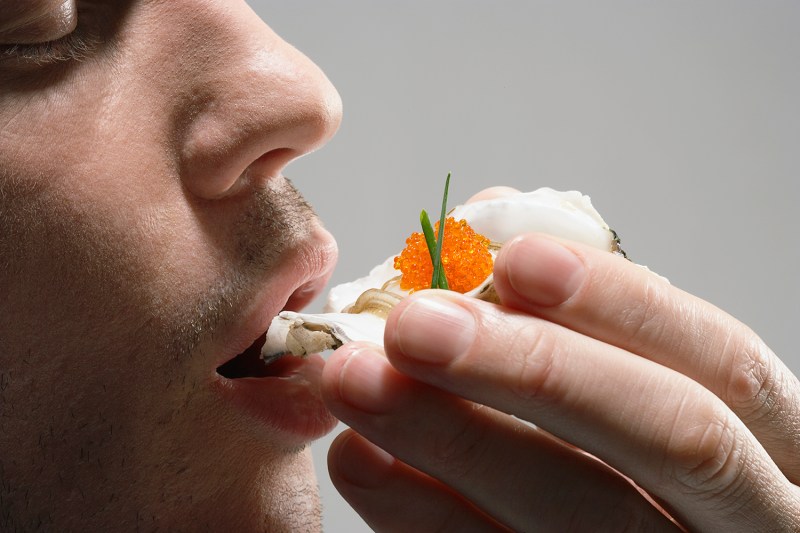
Researchers say aphrodisiacs increase three of the following things: Libido, potency, and/or sexual pleasure. In the case of regular dudes seeking aphrodisiac foods, you’re probably looking for ingredients to make you more excited and increase the satisfaction of sex for you and your partner.
“Most [aphrodisiacs] act through an increase in testosterone concentration and are therefore male-specific.”
Aphrodisiacs work by altering neurotransmitters or hormone concentrations in your central nervous system. Researcher Paola Sandroni adds that they tend to work better on men. “Most act through an increase in testosterone concentration and are therefore male-specific,” she explains.
But the history of proven aphrodisiacs is sketchy, to say the least. The “Spanish fly” chemical from live beetles and bits from Bufo toads both reportedly increase sexual pleasure but are toxic (even deadly) in the wrong quantities. At that rate, you might as well go full Hunter S. Thompson and eat cocaine, amphetamine, and cannabis, which have also been proven to increase “sexually-oriented behavior,” says Sandroni.
Mmm, but what about, like, normal food?
Chocolate isn’t an Aphrodisiac
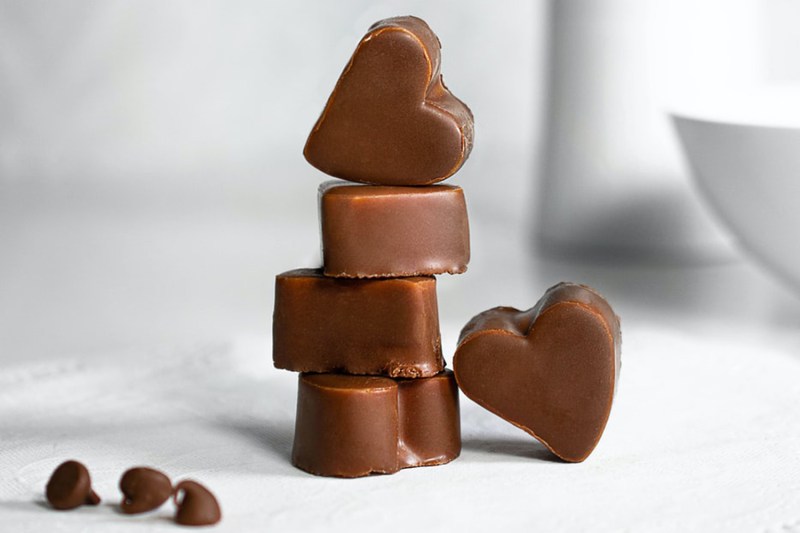
The bad news is, chocolate has not been scientifically linked to sexual arousal or satisfaction. Chocolate can change your serotonin and endorphin levels, which might feel a lot like excitement but isn’t inherently sexual. (Here’s all the science — it’s pretty crazy.)
Other food aphrodisiacs used throughout history include nutmeg, saffron, cacao, and ginseng, but you’ll find little to no hard scientific proof (tested on humans) that any food is truly an aphrodisiac. Cloves, garlic, and ginger have been linked to increased sexual behavior, but those studies were done on animals.
Meanwhile, alcohol, while it may increase your libido, does not make you a stud in the sack. But you already knew that. (You know the phrase for it, so we don’t have to repeat it here.)
Aphrodisiac May Be a Fancy Word for ‘Nutrient’
Sex-health experts sing the same tune: A great sexual experience is achieved when you have a healthy mind and body.
Moreover, sexual arousal is dependent on sensory, cognitive, hormonal, and genetic factors, say researchers in this 2014 study on plants used for the improvement of sexual performance. In this case, the phrase “different strokes for different folks” really is true. One food shouldn’t be able to deliver a blanketed libido increase because our chemistries are different.
Ironically, the reason so many foods are often listed as aphrodisiacs (everything from bananas, watermelon, and figs to chili peppers, celery, and pumpkin) could be because these nutrient-rich foods deliver key dietary building blocks previously lacking in the body. Once you consume these nutrients, the body begins to feel good. And when your body feels better, your sex drive improves.
WebMD experts also surmise the reason spicy foods are considered an aphrodisiac is that they mimic the physical responses we have during sex, like elevated heart rate and sweating.
The reason so many foods are often listed as aphrodisiacs could be because these nutrient-rich foods deliver key dietary building blocks previously lacking in the body.
A popular practice in alternative medicine for people seeking to increase sexual desire and performance is called Vajikarna therapy, used in Ayurveda, a healing practice with roots in India. The concept is similar to aphrodisiacs and was recorded in the first written texts of medicine. Vajikarna involves consuming dried roots, dried fruits, seeds, and stems — all ingredients that will nourish the body by boosting immunity.
Are Oysters an Aphrodisiac?
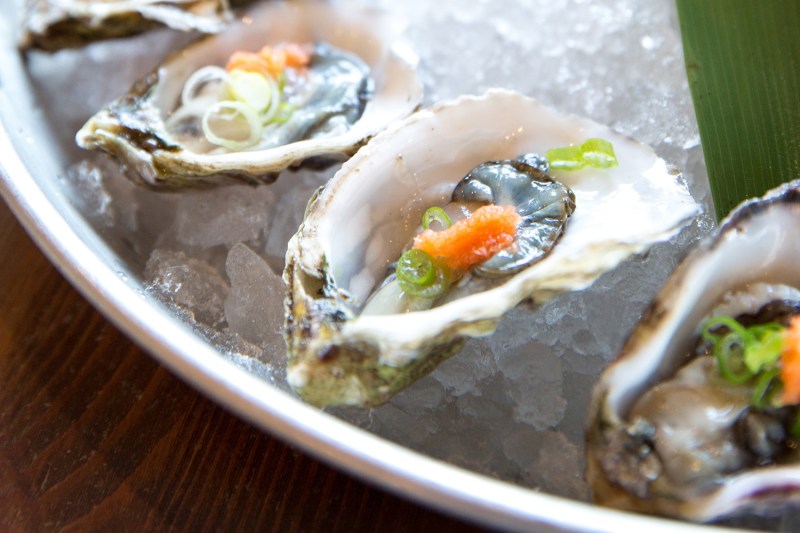
In the case of Casanova and his oysters, it’s possible the dude just had a zinc deficiency.
Despite oysters’ reputation for being an aphrodisiac, there’s no proof. George Fisher, a professor of chemistry, was the first to say he and his colleagues discovered that mussels with the D-Aspartic acid (an amino acid) increased the level of sex hormones in lab rats. These findings mentioned bivalve mollusks but didn’t explicitly say, “Yo, oysters gonna make you horny.”
Developing Your Aphrodisiac Food List

Ask yourself, which foods make you feel sexiest? Which ingredients put you at the peak of your physical performance? Discern between comfort foods that make you feel cozy and healthy foods that get you ready for, well, not sitting on the couch. Ask your partner the same question and there you have it: Your list of aphrodisiac foods for Valentine’s Day and anniversaries.
The belief that one food helps increase desire and satisfaction is often enough to convince your entire body (hello, placebo effect). Test out foods that are rich with nutrients and don’t involve ordering sketchy sperm whale pills on the internet.
Need a place to start? Check out these delicious aphrodisiac recipes developed by chefs (according to some commonly-held aphrodisiacs, of course).
Article originally posted February 2018. Last updated February 2021.
